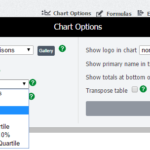Please email our support team with any issues you are currently having or with any ideas you may have about how we can improve Peer-to-Peer in the future.
Thank you for your support and keep the feedback coming!
Recent Upgrades & Enhancements
September 2021 – 5300 Call Report Changes
Overview
The NCUA revised portions of the Specialized Lending and Loans & Leases sections of the September 2021 5300 Call Report. Cumulatively, six accounts were retired, and six were added to replace them. Account titles and descriptions were also modified in accordance with changes to NCUA regulations.
What’s New
- Retired Accounts 614 and 615, which reference the number and dollar amount, respectively, of Loans Purchased in Full from Other Financial Institutions. These codes have been replaced by Accounts SL0014 and SL0015 – Loans Purchased from Other Financial Institutions. These accounts now include the number and dollar amount, respectively, of whole or partial loans purchased from other financial institutions under Section 701.23 or similar state provision year-to-date.
- Retired Accounts 612 and 613, which reference the number and dollar amount, respectively, of Loans Purchased in Full from Other Sources. These codes have been replaced by Accounts SL0012 and SL0013 – Loans Purchased from Other Sources. These accounts now include the number and dollar amount, respectively, of whole or partial loans purchased from sources other than financial institutions under Section 701.23 or similar state provision year-to-date.
- Retired Accounts 616 and 616A, which reference the number and dollar amount, respectively, of Loans, Excluding Real Estate Loans, Sold in Full Year-to-Date. These accounts now include the number and dollar amount, respectively, of whole or partial loans that are not real estate loans that were sold under Section 701.23 or similar state provision year-to-date. These do not include Participation Loans Sold. These codes have been replaced by Accounts SL0016 and SL0017 – Loans, Excluding Real Estate Loans, Sold.
- Modified call report instructions to clarify and account for account code changes.
Rationale for Changes
The September 2021 Call Report modifications were made to accommodate for accounts impacted by Section 701.23 of the NCUA regulations and clarify existing instructions. Section 701.23 governs the purchase, sale, and pledge of whole or partial loans by a federal credit union to one of its own members. In all of the above cases, partial loans are now included in the reporting.
Bottom Line
Outlined above are the major amendments to the 5300 Call Report which have the largest impact on our clients and users. Callahan has made all the necessary changes in our software product’s displays to account for the updates. No other action is needed. For more information, please reference the following documentation released by the NCUA which details the changes and reasoning behind them in full: https://www.ncua.gov/regulation-supervision/regulatory-reporting/credit-union-online/whats-new
How to Update Your Custom Displays
The six new account codes added to the 5300 Call Report in September 2021 directly replace the six account codes that were retired this quarter. To build these codes into any custom displays, you only need to add the new matching account code to the old one. For example, where you see Loans Purchased in Full from Other Financial Institutions, a614 and a615, you can add account code aSL0014 and aSL0015, respectively, to the formula, to make a614+aSL0014 and a615+aSL0015. The two codes are added to ensure you still see accurate data when referencing periods both before and after the 3Q21 call report changes. Below are the updates for your reference:
- a614 = a614+aSL0014
- a615 = a615+aSL0015
- a612 = a612+aSL0012
- a613 = a613+aSL0013
- a616 = a616+aSL0016
- a616A = a616A+aSL0017
Questions?
If you have any questions regarding the NCUA’s September 2021 Call Report changes, or how to update your custom displays in Peer-to-Peer, please email analystsupport@callahan.com or use our live chat function within the software.
June 2021: Peer-to-Peer Formula Changes in 1Q21
Average Member Relationship
Peer-to-Peer’s pre-built formula for average member relationship – calculated as the average share balance per member plus the average loan balance per member, excluding business loans – is changing for added accuracy. The old formula:
CYCLENUM<2017.2[(((a025b+a013-a400a)/a083))](a025b+a013-a400n-a400a1)/A083
Is changing to:
CYCLENUM<2010.4[(((a025b+a013-a400a)/a083))](a025b+a013-a400t1)/A083
We have also created a new defined fact to represent this formula: Average_Member_Relationship
This change is being made to reflect NCUA 5300 Call Report account code changes surrounding commercial lending, as well shifting credit union commercial loan portfolio dynamics.
On the 5300 Call Report, credit unions report Commercial Loans (Member and Non-Member) and Member Business Loans (MBLs) as two separate categories. These two loan types are similar, but are not the same, and there is substantial and indivisible cross-over between the two. We had previously attempted to exclude both, but have instead decided to solely exclude commercial lending account codes from this metric in order to remain consistent.
Additionally, as non-member commercial loans now make up a larger share of credit union loan portfolios – and we no longer are attempting to streamline member commercial loans and MBLs – we are excluding non-member commercial loans from the totals as well.
Finally, the 5300 codes for commercial loans were added to the Call Report in the first quarter of 2011. When viewing the metric in any period before 2011, the formula will use the MBL total as the best existing proxy for commercial loans.
Yield on Loans
In the third quarter of 2019, the NCUA changed the formula that they use to calculate Yield on Average Loans on their popular FPR reports. The old formula:
annual(a110-a119)/((a025b+a025b:dec)/2)
was changed to
annual(a110-a119)/((a025b+a003+a025b:dec+a003:dec)/2)
The difference is the addition of the code for Loans Held-for-Sale (a003) to the denominator. This code has existed on the Call Report for years, but the NCUA decided to add it to the formula only recently, working on the assumption that these loans are earning assets, and are making up larger portions of credit union loan portfolios than they had in the past.
In an effort to ensure our programs accurately match the NCUA’s chosen method of calculation, we have updated the average yield on loans formula in Peer-to-Peer to reflect this change. This new calculation is also used within our defined fact Yield_avg_Loans.
The yield on loans formula exists in many of our built-in reports and displays in Peer-to-Peer, so please note this change if you are comparing the value to any saved reports from prior quarters. At an industrywide level, this formula change affects the yield on loans value by only a few basis points. However, individual credit unions with large loans held-for-sale portfolios will be more noticeably affected.
The yield on loans ratio is also one of the subcategories used to calculate our popular Return of the Member (ROM) Index. Please note that, starting in 2021/Q1, this index will be updated to include loans held-for-sale in the denominator of the yield on loans subcategory. This change is being made to ensure consistency throughout Peer-to-Peer.
If you prefer to use the old formula for yield on loans, please create a custom display using the old formula, found above. Additionally, we have kept one copy of the old formula as a standalone display in Peer-to-Peer. This copy can be found in the Income & Expense section of the Peer-to-Peer left hand navigation, in the folder for Income. The display is named Yield on Loans (Excluding Loans Held-for-Sale).
March 2021 – 5300 Call Report Changes
Overview
The NCUA revised portions of the Income and Expense sections of the March 2021 5300 Call Report. Cumulatively, five accounts were retired and four were added. Account titles and descriptions were also modified in accordance with changes to NCUA regulations.
What’s New
- Account IS004, Unrealized Gain (Loss) due to change in fair value of Equity and Trading Debt Securities, is being retired so that changes in fair market value do not affect net interest margin ratios.
- Retired Account 659, Other Operating Income. This account previously included the Gain (Loss) associated with the Hedged Item (Non-Investment Assets) in a Non-Trading, Fair Value (FV) Derivatives Hedge. The gain (loss) will now be reported in Account IS0026. Replaced by Account IS0020, Other Operating Income (Includes unconsolidated CUSO Income).
- Retired Account IS0021, Gain (Loss) on Equity Securities. This account previously included only the gain (loss) on equity securities. Replaced by Account IS0046 – Gain (Loss) on Equity and Trading Debt Securities.
- Retired Accounts IS0022 and 420D. These accounts previously included the Gain (Loss) associated with the Hedged Item (Investments) in a Non-Trading, FV Derivatives Hedge. Replaced by Accounts IS0047, Gain (Loss) on all other Investments or other Hedged items (not Equity or Trading Debt securities) and IS0026, Gain (Loss) associated with the Hedged Item in a Non-Trading, Fair Value Derivatives Hedge.
- Modified call report instructions to clarify and account for account code changes.
Rationale for Changes
The March 2021 Call Report modifications were made to accommodate for accounts impacted by the FASB Accounting Standards Codification 321 update. ASC 321 went into effect for credit unions in January 2019 and requires credit unions to present equity securities at fair market value each reporting period, with any changes in fair market value recognized through earnings in the period which they occur.
Bottom Line
Outlined above are the major amendments to the 5300 Call Report which have the largest impact on our clients and users. Callahan has made all the necessary changes in our software product’s pre-built displays to account for the updates, but you will need to update all of your custom displays. Please reference the following documentation released by the NCUA which details the changes and reasoning behind them in full: https://www.ncua.gov/regulation-supervision/regulatory-reporting/credit-union-online/whats-new
How to Update Your Custom Displays
The four new account codes added to the 5300 Call Report in March 2021 directly replace the four account codes that were retired this quarter. To update your custom displays, you only need to add the new matching account code to the old one. For example, where you see other operating income, a659, you can add account code aIS0020 to the formula, to make a659+aIS0020. The two codes are added to ensure you still see accurate data when referencing periods both before and after the 1Q21 call report changes. Below are the updates for your reference:
- a659 = a659+aIS0020.
- aIS0021 = aIS0021+aIS0046
- aIS0022 = aIS0022+aIS0047
- a420D = a420D+aIS0026
Questions?
If you have any questions regarding the NCUA’s March 2021 Call Report changes, or how to update your custom displays in Peer-to-Peer, please email analystsupport@callahan.com or use our live chat function within the software.
April 2020
NEW: Introducing Peer-to-Peer’s Excel Plug-In
The Peer-to-Peer Excel Plug-In tool allows users to refresh 5300 and vendor data within Excel, reducing the need for repeated quarterly export reporting tasks.
The Excel Plug-In allows users to accomplish two key tasks:
• Exporting table(s) of data from Peer-to-Peer to Excel, which can be refreshed to include the most recent data.
• Modifying refresh-enabled Excel workbooks to include different accounts, quarters, peer groups, or institutions.
The Peer-to-Peer Excel Plug-In comes highly requested by Peer-to-Peer users just like you. We hope that this new tool helps to increase efficiency with reports. Please email our support team with any issues you are currently having or with any ideas you may have about how we can improve Peer-to-Peer in the future!
March 2020 – 5300 Call Report Changes
Overview
Revisions have been made to the Cash and Investment sections of the March 2020 5300 Call Report. Cumulatively, 18 accounts were removed and two were added. Account titles and descriptions were also modified in accordance with changes to NCUA regulations §701.21(c)(7)(iv) and §701.32(b).
What’s New
- 18 accounts in the Investments section were retired as a result of the implementation of Accounting Standards Update (ASU) 2016-01, which revised Accounting Standards Codification (ASC) Topic 320 and added ASC Topic 321.
- The Cash on Hand account was revised, adding two new accounts for Cash Items in Process of Collection, and Coin and Currency.
- Changed account titles for all accounts related to Payday Alternative Loans to include PAL II loans.
- Modified account titles for Accounts Held by Public Units (previously Government Depositors) to coincide with regulations.
Rationale for Changes
In 2019, the NCUA amended the March 2019 5300 Call Report to align reporting with three Financial Accounting Standard Board (FASB) changes related to implementation and reporting of the upcoming Current Expected Credit Losses (CECL) rule as well as distinctions in reporting related to investment intent for various types of products. The primary benefit of the new FASB rules was providing users of financial statements more detailed information and less ambiguity. The implementation dates for ASC Topic 320 and ASC Topic 321 have passed as of the first quarter of 2020. Accordingly, 18 accounts from the investment schedule are now no longer necessary as credit unions are required to report investments consistent with ASU 2016-01.
Bottom Line
Outlined above are the major amendments to the 5300 Call Report which have the largest impact on our clients and users. Callahan has made all the necessary changes in our software product’s pre-built displays to account for the updates. Please reference the following documentation released by the NCUA which details the changes and reasoning behind them in full:
- March 2020 1Q Call Report Update From NCUA
- https://www.ncua.gov/files/publications/regulations/call-report-changes-march-2020-v2.pdf



